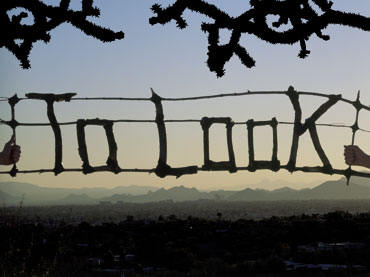I finally received my first issue of
GOOD Magazine this month after a mix-up with my subscription back in September. (sweet!) It's
the Slow Issue, containing inside a number of great articles focused around the issue of our quickening lifestyles.
There is a small interview with an inventor named
Saul Griffith (He's the founder of
Instructables!-and developed designs for
energy-producing kites!) The topic of the interview was "Heirloom Design." I was unfamiliar with the term until today, but it's a pretty interesting concept and goes along with the ideas expressed by William McDonough in my previous post.
"An object with "heirloom design" is something that will not only last through your lifetime and into the next generation, but that you also desire to keep that long because it's beautiful, functional, and timeless." -Griffith
The newest issue hasn't been posted to their webpage, so I'm not sure if the interview will be available online. I will share a few quotes that I particularly enjoyed, but if you get the chance, check out the newest issue; it's informative AND it's pretty!
Griffith says...
"We have to do things in new ways and think differently. That's an opportunity for people with their eyes open. Planned obsolescence and fashion seasons are new and constructed problems."
"You can't make a solution for climate change add up unless you address the issue. If you are a young designer today, it might be hard; it might go against the grain. But, the only way you will win in the long run, the only way you will design for the world we all want, is if you design heirloom products. Thumb your nose at the establishment."
(NOTE: This second quote is kind of a definitive statement and I don't necessarily agree that it's the ONLY way to design for a better world, but it seems like a step in the right direction. )











